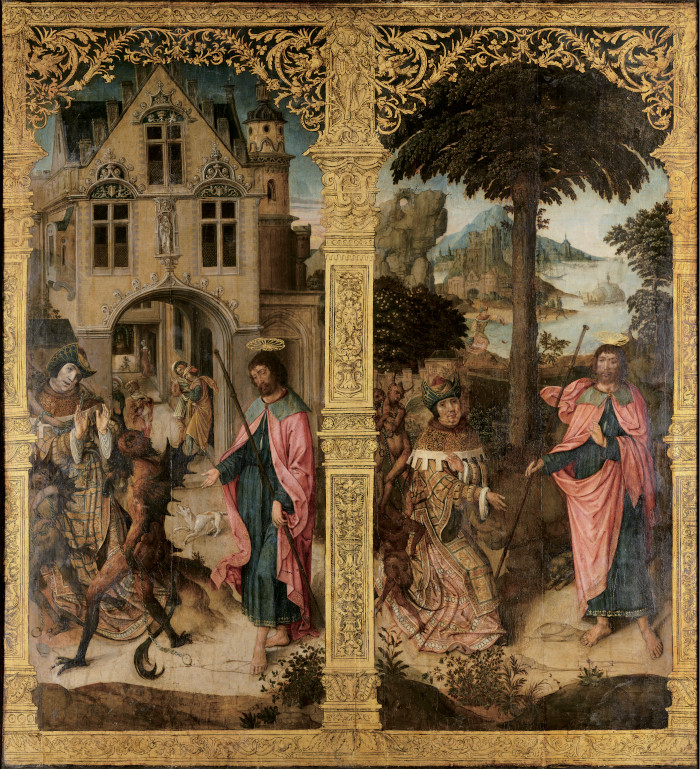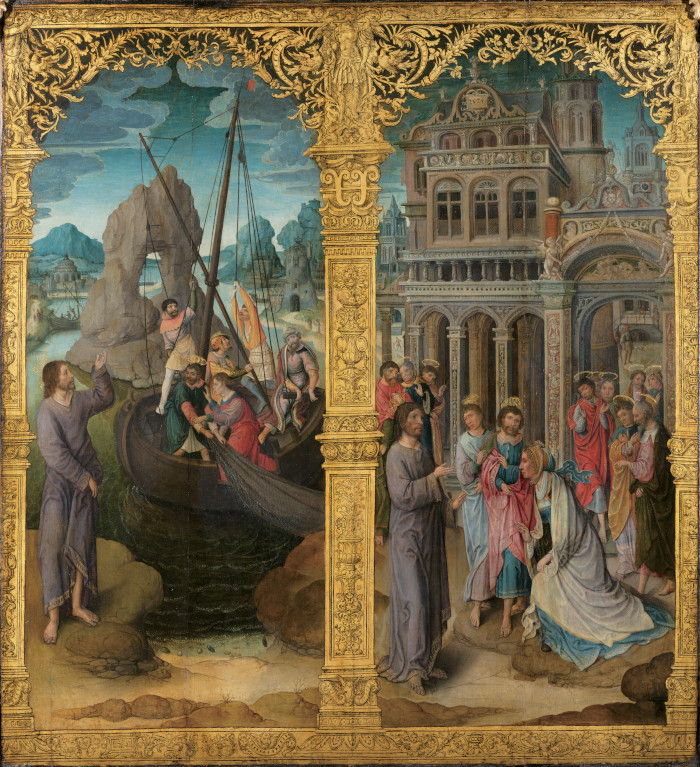This exhibition presents two panels created in Flanders by an anonymous master in the 1520s. These works were separated in the early twentieth century, with one going to Japan and the other to Belgium. The exhibition showcases the latest research findings from art historical and scientific analysis.
This is a rare opportunity to see the work from the Groeningemuseum in Bruges reunited with the the panel from the National Museum of Western Art in Tokyo, more than 100 years after they were separated.
Life of Saints
Framed by a gilded, Renaissance-style architectural motif, the four scenes on both panels depict episodes from the life of saints. The Bruges panel shows two scenes that are based on the Gospel accounts of the calling of John and James, the sons of Zebedee. On the left, Christ calls to them after they return from fishing on the Sea of Galilee. On the right, their mother, Mary Salome, pleads with Jesus in the presence of the twelve apostles to grant her sons a privileged place in paradise.
- Anonymous (Bruges), Scenes from the Life of St. James the Great ca. 1525 National Museum of Western Art, Tokyo
- Anonymous (Bruges), Scenes from the Life of Saint James and Saint John 1525 Musea Brugge
The Tokyo panel depict scenes from the life of St. James the Greater. On the left is St. James liberating the sorcerer Hermogenes, who has been bound by demons. In the background is an imaginary building with a complex structure. On the right, St. James is shown giving his staff as an amulet to Hermogenes, who has converted to Christianity. In the distant landscape, a small figure of Hermogenes is seen casting his books of magic into the sea.
One Altarpiece
The stylistic similarities and the infrared underdrawings suggest a high probability that both works belonged to the same altarpiece.
The use of gilded architectural motifs was a popular decorative element among Bruges painters in the early 16th century, such as Lancelot Blondel, which suggests the altarpiece was created there. At the same time, the theatrical gestures of the figures and the imaginary buildings show a connection to Antwerp Mannerism. The spatial recession created by the shifting tones of brown, green, and blue, as well as the diverse and detailed natural scenery, show the influence of landscape painters like Joachim Patinir.
Rediscovered in Japan
According to a photo and a note from art historian Max J. Friedländer in the collection of the RKD – Netherlands Institute for Art History, both panels were at the art dealer Farr at 39 Old Bond Street in London in 1909. The Bruges panel was then included in a 1911 catalog by the Kleinberger Gallery in Paris before it was acquired by the Groeningemuseum in 1912. The Tokyo panel was not in the same catalog, suggesting the two had already been separated. The former was held by a private collector in Japan and remained largely unknown to art historians until its acquisition by the National Museum of Western Art, at which point it was “rediscovered.”


